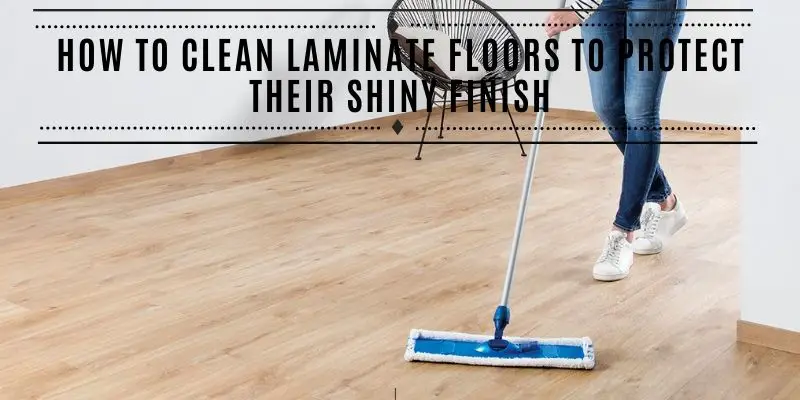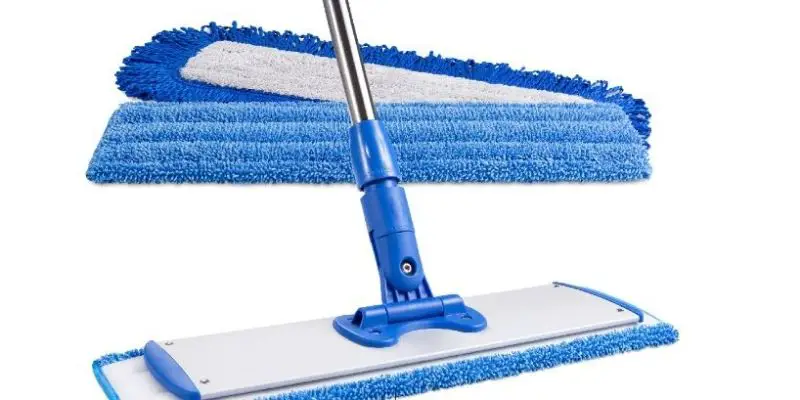Laminate floors have become a popular flooring choice among homeowners due to their practicality and affordability. With their ability to withstand everyday wear and tear while requiring minimal maintenance, they’re a practical option for many households.
Laminate floors are made up of 4 layers, and to understand how best to maintain the floors so as to prolong their lifespan, you have to understand what the layers are and what they do.
Each layer plays its unique role in creating a flooring material that is both stylish and durable. Once you understand them, you can better appreciate their durability and design versatility.

How to Clean Laminate Floors to Protect Their Shiny Finish
The 4 layers of Laminate flooring
Wear Layer
The topmost layer of laminate flooring is the wear layer, and it’s the one that directly faces foot traffic. This layer gives the floor a shiny sleek finish and ensures the floor can withstand scratches, dents, and abrasion. The wear layer’s thickness determines the durability of the laminate flooring, with thicker wear layers lasting longer than thinner ones.
Decorative Layer
The decorative layer is the second layer of laminate flooring and is responsible for creating the flooring’s aesthetic appeal. This layer is a high-resolution image of a natural material like wood or stone. Thanks to advancements in technology, the decorative layer can now mimic the look and feel of real hardwood or natural stone convincingly.
Inner Core Layer
The inner core layer is the foundation of laminate flooring, and it’s where the floor’s strength and stability come from. This layer is made of high-density fiberboard (HDF) or medium-density fiberboard (MDF) and is the thickest layer of laminate flooring. HDF and MDF are highly compressed materials that are resistant to moisture and can withstand heavy loads.
Backing Layer
The backing layer is the bottom-most layer of laminate flooring, and it provides additional stability and protection. This layer is typically made of melamine or plastic and helps to prevent moisture from seeping into the inner core layer. Additionally, the backing layer provides insulation and noise reduction properties, making laminate flooring a quieter and more comfortable option than other flooring materials.
So now that you fully understand laminate floors, what’s the best way to maintain the appearance and durability of your laminate floors?
How to Clean Laminate Floors
Start with a dry mop or vacuum
The first step in cleaning your laminate floors is removing any loose debris, dust, or pet hair that may be on the surface. Use a soft-bristled broom, a dry mop, or a vacuum cleaner with a hard floor attachment to sweep or suck up any loose particles. Avoid using a regular vacuum cleaner with a beater bar or rotary brush, as this can scratch and damage the surface of your laminate floors.
Use a cleaner specifically designed for laminate floors
Laminate floors are very sensitive floors, and the cleaner to be used highly matters. There are some very good cleaners in the market like Black diamond stoneworks wood & laminate floor cleaner, Bona Stone, Tile & Laminate floor care system Armstrong Hardwood and Laminate Floor Cleaner, Just to name but a few, You can read more in the Top 10 Laminate floor cleaners. Avoid using harsh chemicals, abrasive cleaners, or steam mops, which can damage the surface of your laminate floors and strip away their protective coating. Instead, look for a cleaner that is specifically formulated for laminate floors, such as Bona or Black Diamond.
Apply the cleaner with a microfiber mop
Once you have selected a suitable cleaner for your laminate floors, it’s time to apply it to the surface. Use a clean microfiber mop or a spray bottle to apply the cleaner evenly over the surface of your floors. Avoid using too much water or cleaner, as this can cause your floors to become waterlogged and warp or buckle over time.

Wipe up any excess moisture
After applying the cleaner to your laminate floors, use a clean, dry microfiber mop or towel to wipe up any excess moisture. This will help to prevent water spots, streaks, or other damage to the surface of your floors. Be sure to work in small sections and take your time, being careful not to leave any moisture behind.
Use a protective coating
A protective coating for laminate floors is a clear layer that’s applied to the top of the laminate flooring. The coating serves as a barrier that protects the wear layer from scratches, scuffs, and other types of damage. Protective coatings come in different types, including wax, oil, and polyurethane.
Wax coatings are one of the oldest and most traditional types of protective coatings for laminate floors. They provide a hard and durable finish and can enhance the natural beauty of the laminate flooring. Wax coatings need to be applied regularly to maintain their protective properties, and they can be susceptible to water damage.
Oil coatings are another type of protective coating for laminate floors. They provide a hard-wearing and water-resistant finish that’s easy to maintain. Oil coatings enhance the natural wood grain of the laminate flooring, giving it a warm and rustic look. However, oil coatings require regular maintenance, and they can take longer to dry than other types of protective coatings.
Polyurethane coatings are the most popular type of protective coating for laminate floors. They provide a hard and durable finish that’s resistant to scratches, scuffs, and water damage. Polyurethane coatings are easy to apply and maintain, and they dry quickly. They also come in different finishes, from high-gloss to matte, giving homeowners the flexibility to choose the look they prefer.
The benefits of applying a protective coating to your laminate floors include:
- Protection against scratches, scuffs, and other types of damage
- Enhanced durability and lifespan of the laminate flooring
- Easy maintenance and cleaning
- Aesthetically pleasing finishes that can enhance the natural beauty of the laminate flooring
- Resistance to water damage
Protective coatings for laminate floors can help extend the lifespan of your flooring and protect it from everyday wear and tear. Choosing the right type of protective coating depends on your preferences, the level of protection you need, and the aesthetic you want to achieve. Always follow the manufacturer’s instructions when applying protective coatings to your laminate floors for the best results.
Conclusion
In conclusion, cleaning laminate floors can be a simple and straightforward process if you follow these tips and tricks. By using a cleaner specifically designed for laminate floors, applying it with a microfiber mop, and wiping up any excess moisture, you can protect the shiny finish of your floors and keep them looking their best for years to come. Remember, regular cleaning and maintenance are key to ensuring the longevity and durability of your laminate flooring.
